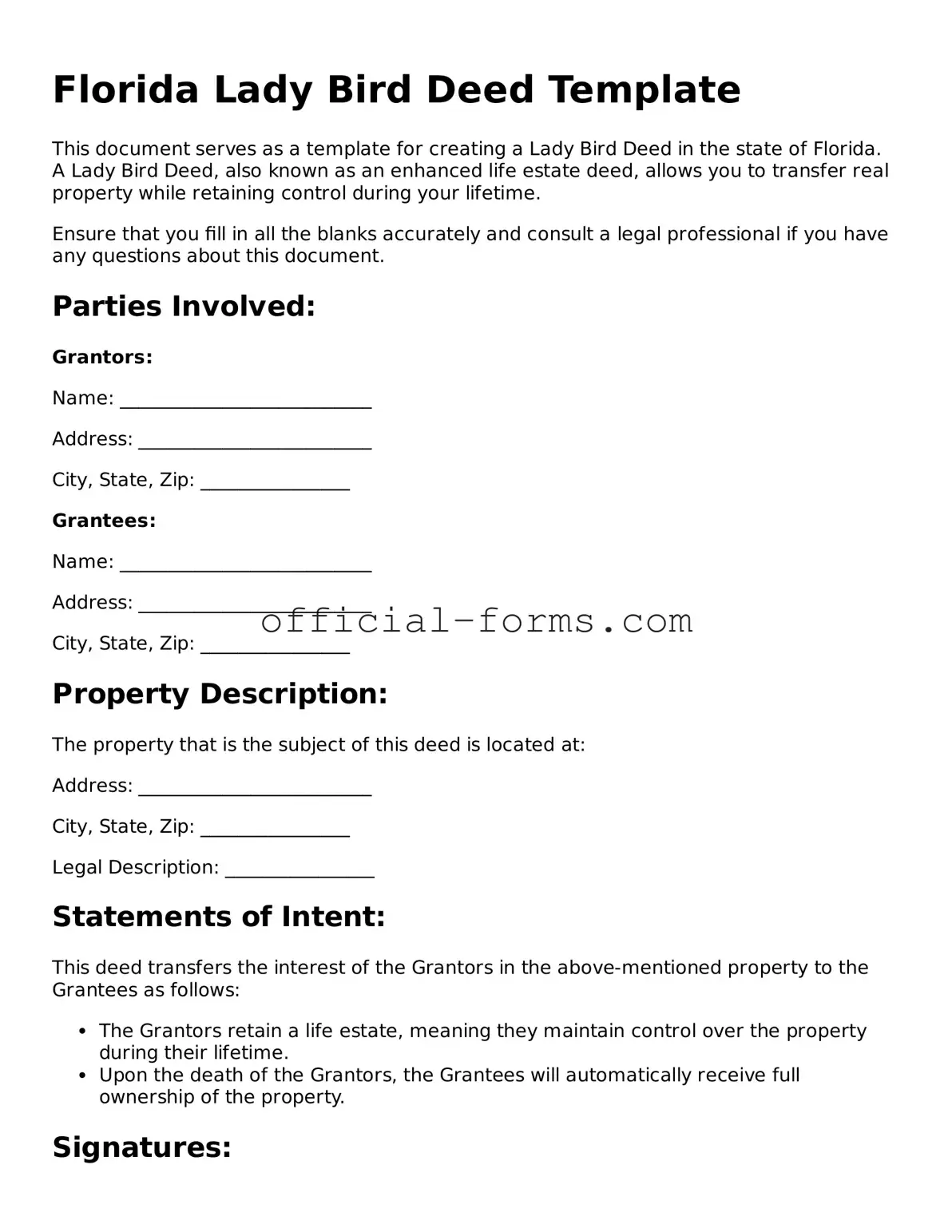When filling out the Florida Lady Bird Deed form, individuals often encounter various pitfalls that can lead to complications down the line. One common mistake is failing to provide accurate property descriptions. A vague or incorrect description can create confusion regarding the property being transferred. It is essential to include precise details, such as the property address and legal description, to avoid any misunderstandings.
Another frequent error involves neglecting to include all necessary parties. The deed must list all individuals who have an ownership interest in the property. If a co-owner is omitted, it may lead to disputes or legal challenges later on. Ensuring that every relevant party is included in the document is crucial for a smooth transfer process.
People also sometimes overlook the importance of signing the deed correctly. The form requires signatures from all grantors, and it must be notarized to be valid. Failing to sign or improperly signing the document can render it ineffective. Therefore, attention to detail during this step is vital to ensure the deed holds up in legal situations.
In addition, individuals may mistakenly assume that the Lady Bird Deed does not require witnesses. While Florida law does not mandate witnesses for this specific deed, having them can provide an extra layer of protection. Some people choose to include witnesses to strengthen the validity of the document, so it’s worth considering.
Another mistake is not understanding the implications of the deed. The Lady Bird Deed allows for the property to pass automatically to the named beneficiaries upon the owner's death, but some individuals may not fully grasp how this affects their estate planning. It is advisable to consider how this deed fits into the overall estate plan to avoid unintended consequences.
Additionally, individuals may fail to record the deed after it has been executed. Recording the deed with the county clerk is a critical step that provides public notice of the ownership transfer. Without this step, the deed may not be enforceable against third parties, which could lead to complications in the future.
Lastly, people often overlook the potential tax implications associated with a Lady Bird Deed. While this type of deed can help avoid probate, it may have consequences for capital gains taxes and homestead exemptions. Consulting with a tax professional can help clarify these issues and ensure that all aspects of the transfer are understood.
